June 11th, 2025 - Storm
After a quiet night and a good breakfast in the camper, we hiked up to Svartifoss (black waterfall, named after the color of the surrounding rock). The trail starts right at the campground. The basalt columns at the waterfall are said to be the inspiration for the famous Halgrimmskirkja in Reykjavik.
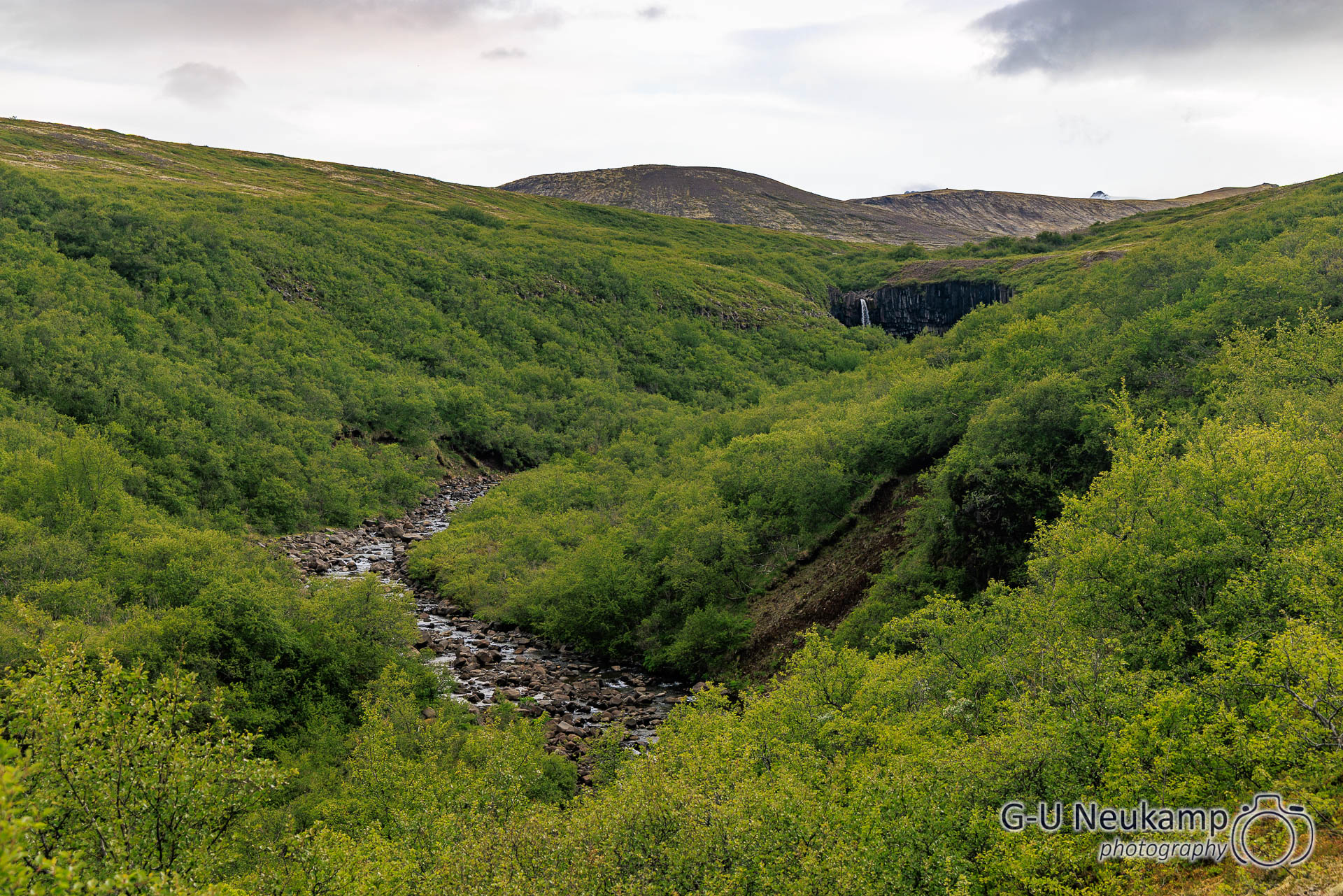
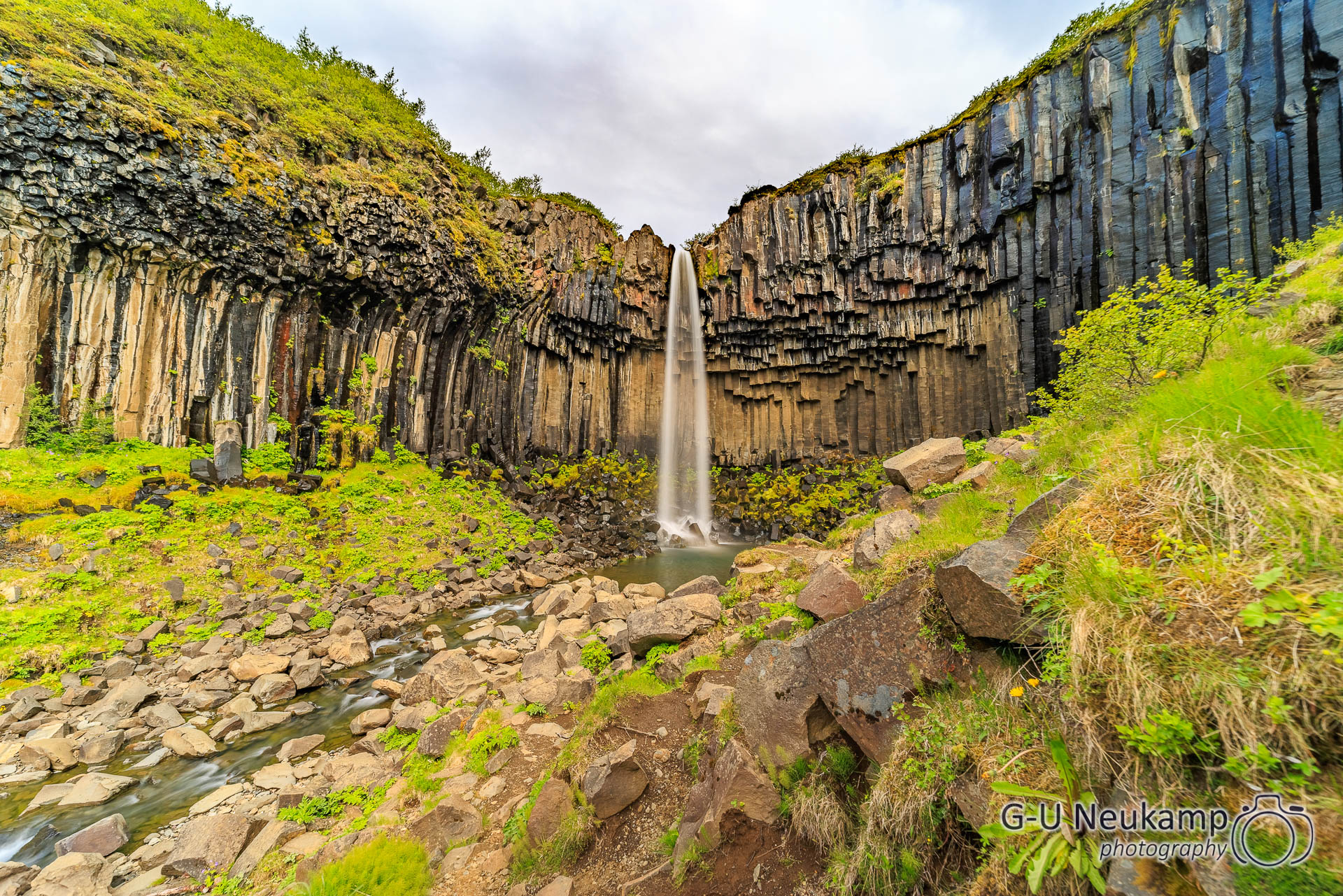
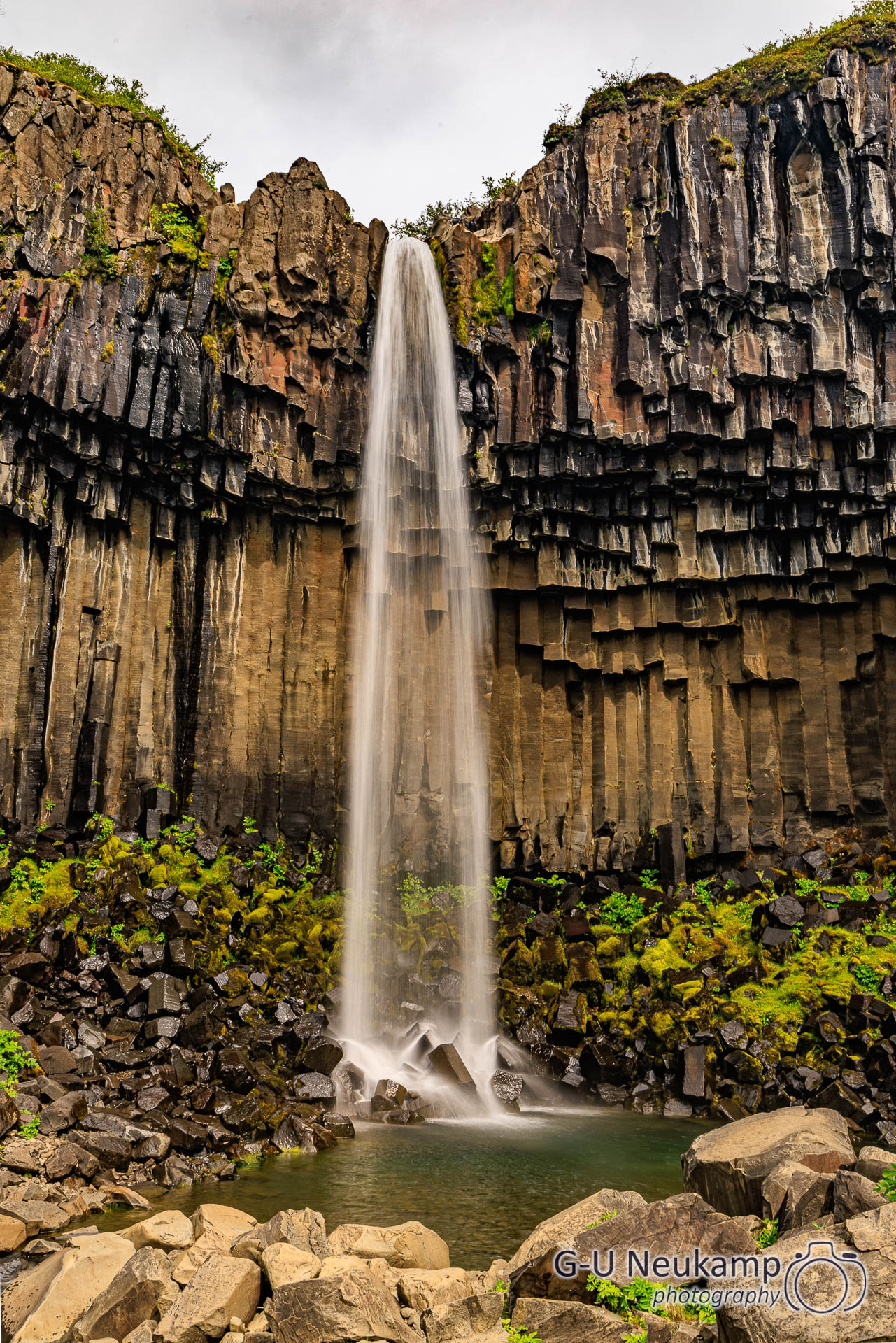
Trivia: Basalt columns at Svartifoss
The impressive hexagonal basalt columns at Svartifoss are the result of the cooling of lava: when magma solidifies, it contracts and breaks into regular shapes - most commonly the typical hexagonal columns.This pattern is so efficient that it can also be found in nature, for example in honeycombs, dried mud puddles, or bee hives. This pattern is so efficient that it can also be found in nature, for example in dried mud puddles and bee combs.
At Svartifoss, however, the black columns gradually break off and fall into the depths. For this reason, visitors are not allowed to leave the paths and platforms – for their own safety, to protect the vegetation, and so that other travelers can experience the waterfall in all its beauty.
After the morning camper supply and disposal rituals, we set off for the ice lagoon. On the way there, we wanted to check out a gorge called Mulagljufur Canyon. Before that, we had a great view of the glacier tongue of Skaftafellsjökull, a 10-kilometer-long and almost 2.5-kilometer-wide glacier tongue of the gigantic Vatnajökull Glacier. Below the glacier is a glacial lake:
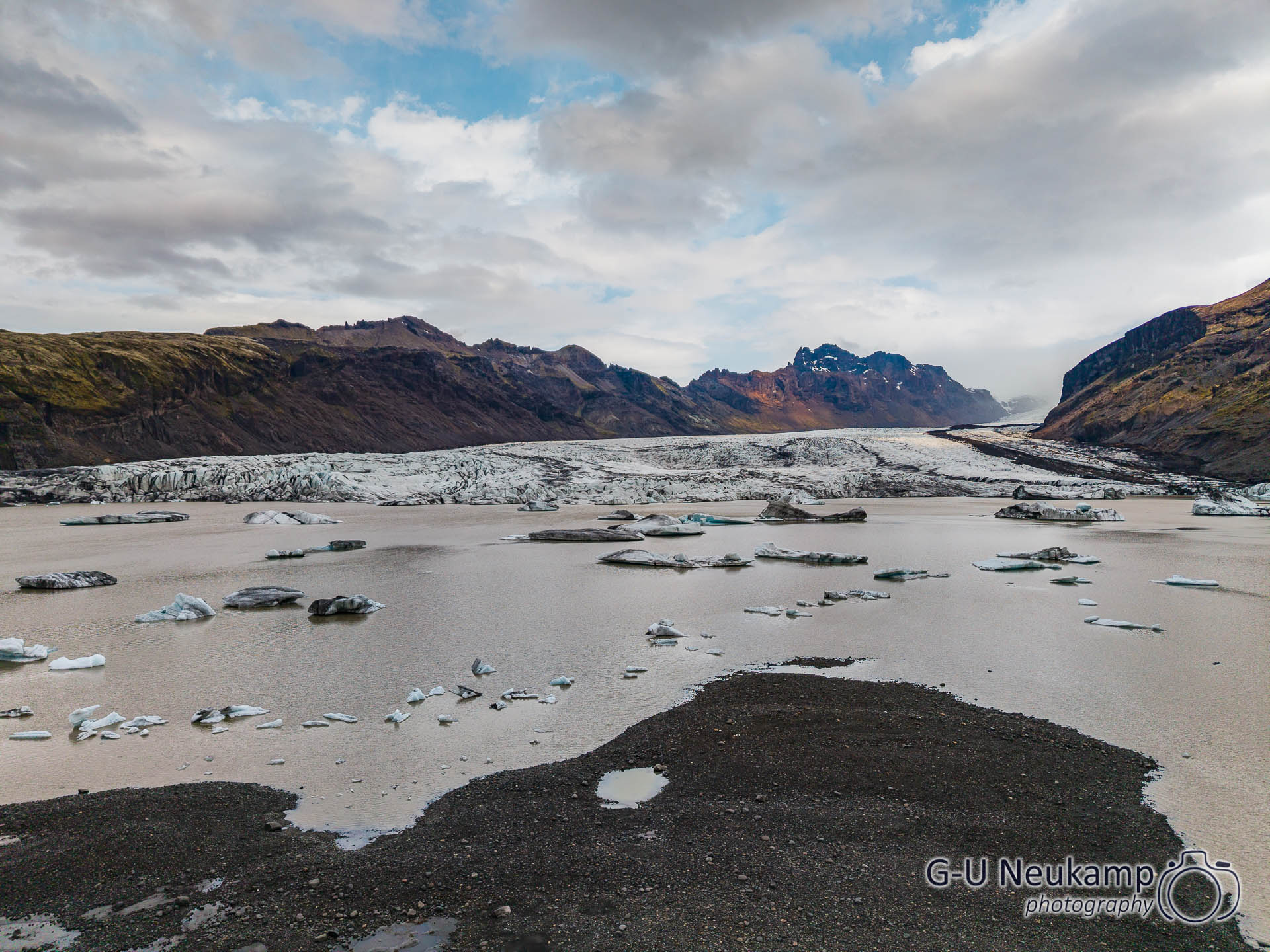
We continued on the ring road to the canyon and the ice lagoon. But… the weather!
During the journey, it suddenly became increasingly windy within about five minutes. We could barely keep the camper on the road; it was already shaking alarmingly in the gusts. Despite significantly reducing our speed, it became increasingly difficult to keep the bulky vehicle on track. The heavy trucks, on the other hand, were completely unaffected by the storm and overtook us several times at full speed.
So we were forced to drive to the first available parking lot (belonging to Trolls Expedition, which offers glacier hikes). Someone immediately came over, but was almost blown away, and asked if we were planning to go hiking! When he realized that we had driven here out of sheer necessity, he showed us the best way to park the camper in the wind. And there was an incredible amount of wind, shaking the camper through and through.
At least the storm had blown most of the clouds away. There was even a beautiful 🌈 rainbow.
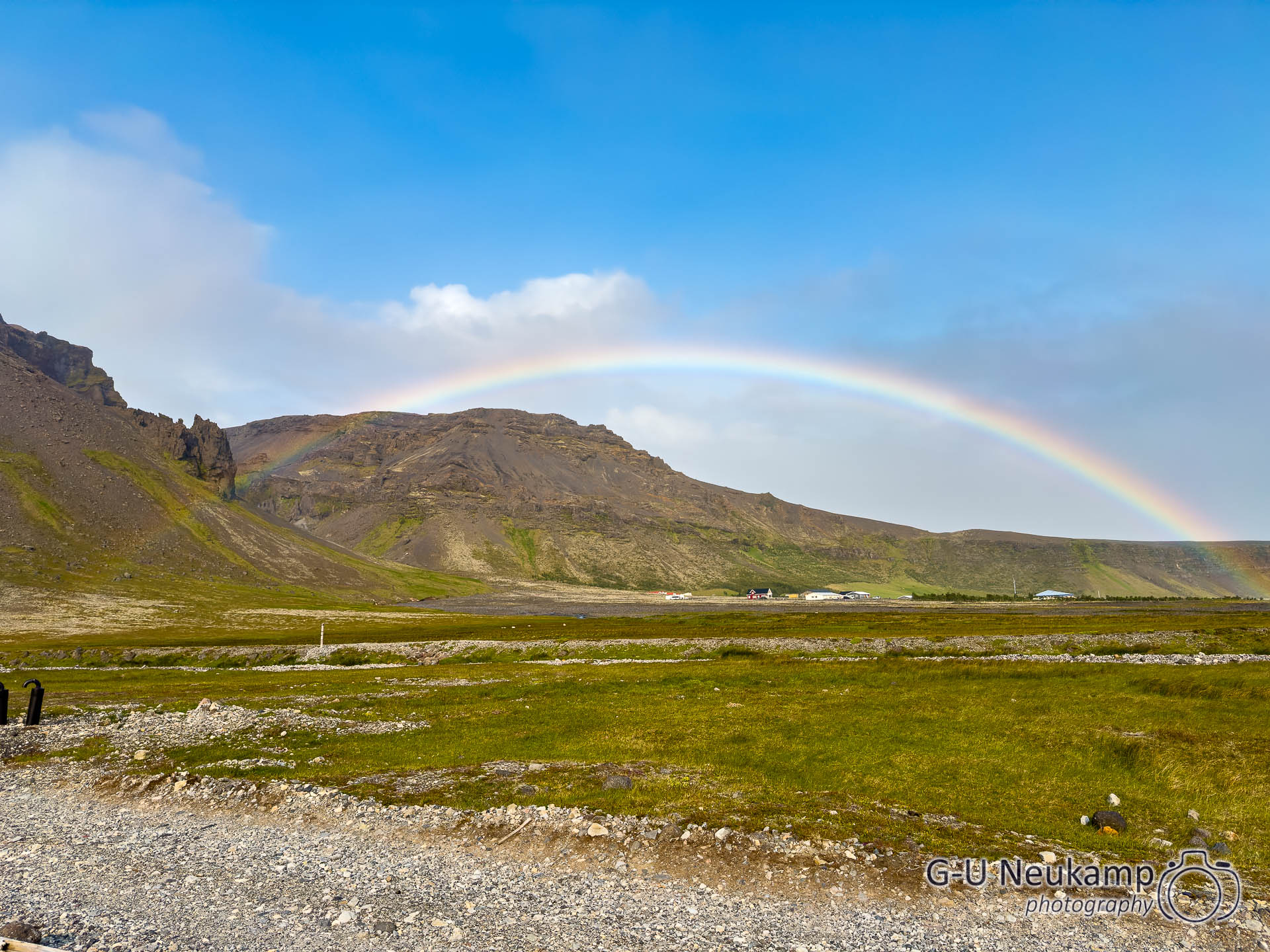
Since we were stuck here, we watched the first part of the Netflix series KATLA on the iPad. It is set in Vik, where we saw our first puffins yesterday. We recognized many of the locations right away. The series takes place after a volcanic eruption and depicts a world in which mysterious events and supernatural phenomena occur. Well worth watching—especially if you’re traveling in Iceland.
Around 10 p.m., the wind finally died down a bit. We already had dinner. More campers had gathered in the parking lot to weather the storm. Late in the evening, they all drove away one after the other. Due to the late hour, I had already resigned myself to staying there overnight, but Simone found it scary to be there alone. She kept on moaning (she’s good at that!) until I got out of bed again and we drove back to a campsite 12 km away.
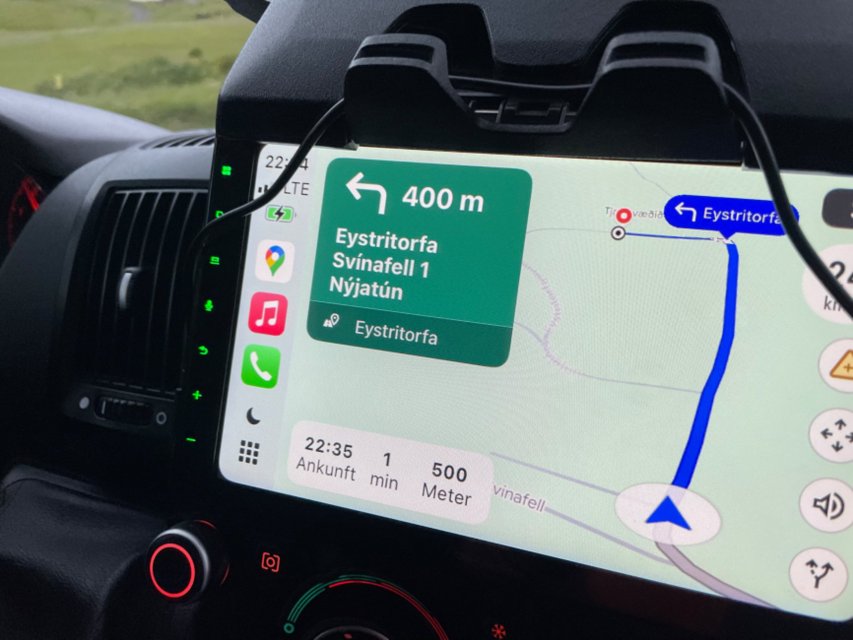
Although the storm subsided during the night, there were several heavy rain showers. The weather in Iceland is truly unpredictable. The locals say, “If you don’t like the weather, just wait an hour.” However, it is supposed to improve the next morning, so we will try our luck again with the canyon and ice lagoon.
